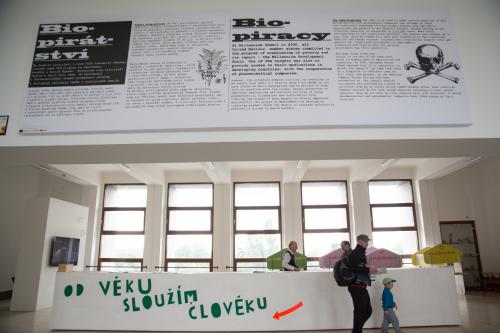How to do it step by step
1st Step:
Choosing the topic
At first we had to choose the topic for the tool. We chose the story about the neem tree, which is quite well-known and for which sufficient information is available. This process was completed in two weeks.
2nd Step:
Gathering information
At this stage, we had to prepare information and texts about the topic. We carried out research via the internet and libraries, and asked other people to undertake research and gather information about the case of the neem tree.
After a month, we had found enough information and, therefore, wrote the text and started preparing the poster.
3rd Step:
Design and text
The next step was to produce the design and final text for the poster.
The poster was designed by a graphic designer, who also decided to make it look like a newspaper page. Consultations and cooperation with the artist took about two weeks.
4th Step:
Preparing the poster
The designer finished the design and submitted it for approval. We made some changes and corrections to the text. There were several rounds of correction before we agreed on the final text. Furthermore, we had to overcome the challenge of only having limited space available to include all the information that we wanted In total, this step took around three weeks.
5th Step:
Producing the poster
The poster was printed together with other posters that were used in the same exhibition. Thanks to the consolidated order, we obtained reduced prices for all the prints. This step was completed in one week.
6th Step:
Installing it in the museum
The poster was framed directly in the museum and was installed together with four other tools in the National Museum of Agriculture in Prague. The installation of the exhibition took about a week.




















